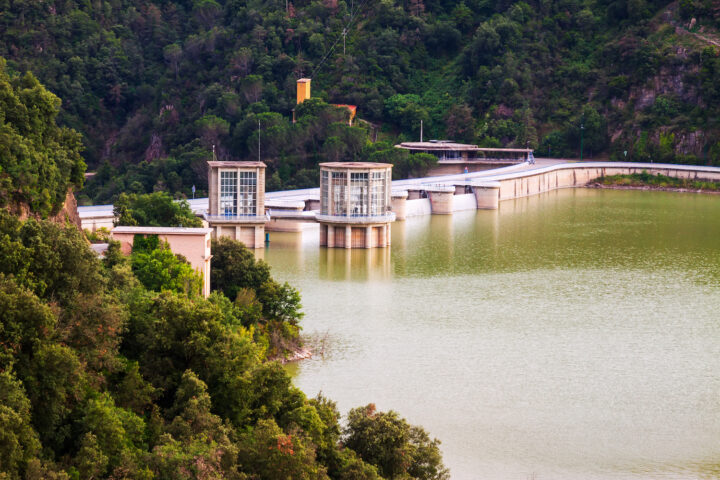7 ways to make Philippine cities more climate-resilient
Blogs
May 26, 2023

Thanks to its location at the edge of the western Pacific Ocean, the Philippines has long been vulnerable to typhoons and floods. However, climate change has further intensified these weather events and also brought along more frequent droughts, straining the country’s infrastructure, food and water security, economy, and social fabric. Climate change has become such an acute problem that, according to the Global Climate Risk Index 2021, the Philippines is now the second most vulnerable country to climate change impacts, after Myanmar.
While climate change has had serious negative impacts on the entire country, soon it may be Philippine cities that see its most obvious effects. The combination of unusually high population densities, antiquated infrastructure, and proximity to coasts and rivers have left major population centers like Metro Manila at the mercy of extreme weather events.
With climate change seen to continue mostly unabated, Philippine cities need to brace themselves for what’s to come. Developing climate-resilient urban planning and infrastructure will become key in ensuring the long-term viability of Philippine cities, even in the face of increasingly erratic weather and climate patterns. In this article, we’ll look at some ways Philippine cities can become more climate-resilient.
1) Conserve existing freshwater resources
Due to its geography, the Philippines has long struggled with maintaining water security throughout the entire country. Due to climate change, even historically water-secure areas such as Metro Manila are now experiencing more frequent and severe water shortages during the dry season. If urban populations continue to grow at their present pace, existing water sources may soon become inadequate all year round.
Private developers like Aboitiz InfraCapital (AIC) are now proving themselves key in preserving these delicate water resources. It has pioneered the use of several innovative water management techniques and technologies to reduce distribution losses and treat wastewater. AIC’s Lima Water Corporation at the Lipa Technology Center in Batangas is a good avenue for testing and validating novel wastewater treatment infrastructure for potential use in the company’s other business ventures. The knowledge gained from AIC’s tests may one day provide solutions to many of the country’s climate-related water security issues.
2) Develop urban bulk water supply projects
Unfortunately, conserving existing water supplies may not be enough for many Philippine cities. Climate change is intensifying the dry season and increasing global sea levels, directly affecting the ability of existing water reserves to replenish themselves. This means that growing cities will need to find new, stable sources of potable water for their inhabitants
For cities near rivers and other suitable freshwater sources, investing in bulk water supply projects may be the answer. Bulk water supply projects use modern water treatment technologies to tap into new sources of water to supplement or replace existing water supplies. AIC’s Apo Agua Infrastructura project in Davao City is now set to supplement the city’s over-tapped groundwater reserves with treated water from the nearby Tamugan River, achieving water security after years of shortages. Soon, lessons learned from Apo Agua may be applied to other Philippine cities, increasing their climate resilience as well as their long-term water security.
3) Further develop flood control initiatives
Floods are one of the most common and damaging impacts of climate change in the Philippines. Several major Philippine cities are particularly vulnerable to flooding due to their low elevations and locations near rivers and floodplains. In addition, runaway urbanization and the lack of green spaces have compromised the ability of the soil in many areas to absorb rainwater, resulting in the rapid buildup of floodwater during increasingly frequent typhoons and storm surges.
To address this challenge, cities need to invest in flood control initiatives such as the construction of river walls, stormwater drainage systems, and floodways. For example, the Pasig-Marikina River Channel Improvement Project, which is now in the late stage of completion, aims to improve the carrying capacities of waterways within Metro Manila through dredging and widening, reducing the area’s flood risk.
Other urban areas that may not face flooding risks today should also look into potential solutions that may prevent future floods. Allocating adequate green space and parks to increase the ground’s water-holding capacity and investing in future-ready drainage systems may help to prevent serious flooding in areas that may become flood-prone in the coming decades.
4) Promote sustainable transportation

Transportation is a significant contributor to greenhouse gas emissions, air pollution, and urban heat island effects, all of which have negative implications for the future viability of Philippine cities. Sustainable transportation modes such as walking, cycling, and eco-friendly public transport can help reduce the Philippines’ carbon emissions contributions while also resulting in better livability in urban areas,
Fortunately, many Philippine cities are moving in the right direction. Cities like Makati, Pasig, Iloilo, and Cebu are just some of the ones that have implemented bike-share programs, bike lanes, and sidewalk improvements to encourage cycling and walking. In addition, LGUs all over the country are now exploring the wider use of low or zero-emission public utility vehicles, which may eventually be powered from grids supplied through renewable energy sources.
Most notably, several Philippine cities are now in the process of developing or finalizing long-awaited mass transit systems. Several railways are currently under construction in Metro Manila while other major metropolitan areas like Cebu are also in the process of developing their own mass transit solutions. Once completed, these systems will mitigate the number of cars plying the country’s increasingly crowded and polluted urban roads.
5) Expand and enhance green spaces
Unfortunately, Metro Manila and other large Philippine cities have become especially notable for the lack of public parks and green spaces, especially relative to their size and population. As mentioned earlier, the reduced water-holding capacity of the ground in and around cities leaves them vulnerable to increasingly frequent floods and typhoons. In addition, the lack of trees and other plants prevents the effective capture of carbon in the atmosphere, further accelerating climate change and increasing the danger to Philippine cities.
Expanding the available green space in cities will not only help mitigate issues related to water holding capacity and carbon emissions but it should also have other benefits for inhabitants. More substantial green spaces will help improve air quality and promote physical and mental well-being. In the long term, this can lead to a reduction in overall healthcare costs and free up more people to create value for local economies.
AIC already validated the value of green spaces in its economic estates and other development projects. The inclusion of green spaces and other sustainable elements as part of the fundamental design philosophy of AIC’s master-planned estates not only increases these developments’ resilience to climate change, but also allows for the creation of highly livable communities within these sites. Eventually, the green practices implemented by AIC in its real estate developments may serve as a template for the expansion of green spaces in urban areas throughout the Philippines.
6) Encourage climate-friendly policy development
The policy and legal frameworks governing the priorities and infrastructure choices of city planners can have a major effect on the ability of cities to survive upheavals caused by climate change. Things as simple as the enforcement of existing building codes and vehicle emissions standards may have a positive cumulative effect on a city’s contribution to climate change and, consequently, its long-term survival.
In particular, Philippine cities should explore policies that encourage or mandate the development of green buildings and the retrofitting of existing structures. Green buildings are designed to be energy-efficient, environmentally friendly, and resilient to extreme weather events, allowing them to survive the floods and typhoons that are likely to become more commonplace in coming years. Retrofitting existing buildings with water and energy-efficient technologies can also help to reduce resource consumption and improve the viability of cities in the face of accelerating climate change.
Buildings constructed within AIC’s economic estates are already constructed with climate resilience fully in mind. This focus on climate resilience, while important for the Philippines’ long-term survival, also happens to make good business sense as well. Businesses are constantly striving to find ways to reduce their resource use, and AIC’s climate-friendly economic estates are proving to be highly attractive to a growing number of organizations. As such, a nationwide pivot to climate-friendly policies may serve to not only make the Philippines more resilient to climate change but also more attractive to foreign investors.
7) Promote social cohesion and community resilience

A recent report prepared by the International Institute for Sustainable Development and the University of Winnipeg indicates that socially cohesive communities are better able to cope with the impacts of climate change. This makes sense as the mentioned climate-resilience strategies may be difficult to implement without the buy-in of all Filipinos—not just those who currently reside in cities.
Given this, all Filipinos must be given a voice and are encouraged to view climate change as a problem that will seriously affect everyone. By promoting an inclusive culture that considers the needs of the less advantaged, policymakers can not only ensure equitable green development but also fewer barriers to the adoption of climate-resilience strategies.
Working together for climate-resilient cities
As Philippine cities continue to face the challenges of climate change, they must prioritize the implementation of these and other emerging solutions to ensure a climate-resilient future. Development partners such as Aboitiz InfraCapital are now playing a significant role in driving these initiatives forward with projects like the Apo Agua Infrastructura, Lima Water, and many others. Working together, both the public and private sectors as well as everyday Filipinos can help to create more livable and equitable climate-resilient cities in the coming years.






























